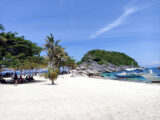Bulacan is a melting pot and the cultural capital of the Philippines. The cuisine is as wide and varied as it’s colorful history. Many of the foods are influenced by Spanish and Chinese cuisine passed down through the generations. There is always something to do in Bulacan! The province is known for its many beautiful churches, historical landmarks and recreational activities. If that’s not enough there are many colorful festivals through the year.
Quick Facts
| Languages | Tagalog, English, Kapampangan |
| Capital | Malolos |
| Land Area | 2,796.10 square kilometers (1,079.58 sq mi) |
| Population | 3,708,890 (2020) |
| Major Industries | Marble and Marbleized Limestone, Jewelry, Pyrotechnics, Leather, Aquaculture, Meat and Meat Products, Garments, Furniture, High-Value Crops, and Sweets and Native Delicacies, and a wide variety of high-quality native products. |
| Known For | The Land of Heroes |
| Religions | Roman Catholic (89.4%, Iglesia ni Cristo (3.3%), Evangelical (1.5%) |
| Best Time to Visit | January through May and November to December |
| Website | https://bulacan.gov.ph/ |
Climate
Like most of the Philippines Bulacan has its wet and dry seasons. November to April is generally dry (less wet) while wet for the rest of the year. The northeast monsoon (amihan) prevails from October to January bringing in moderated and light rains. From February to April, the east trade winds predominate but the Sierra Madre (Philippines) mountain range to the east disrupts the winds resulting to a dry period. From May to September, the southwest monsoon (habagat) brings considerably wetter weather. The hottest month is May with an average temperature of 29.7 °C (85.5 °F) while the coolest is February with an average temperature of 25.1 °C (77.2 °F).
Things to Do
Historical and Religious Landmarks
Bulacan occupies a special place in Philippine history, both political and religious. The number of historical and religious landmarks are too many to list here, however we’ve listed a few of the most famous below.
Barasoain Church (Malolos)
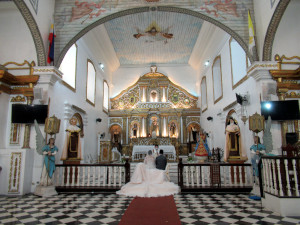 Barasoain Church (Our Lady of Mount Carmel Parish officially) is a Roman Catholic church build in 1888. It is known as the “Cradle of Democracy in the East” and is the most important religious building in the Philippines. The Constitutional Convention of the First Philippine Republic took place here. Its Historical Landmarks History Museum is completely loyal to protecting the fruits of the Philippine-Spanish Revolution in addition to independence and democracy. Its Ecclesiastical Museum contains a collection of religious artifacts from around Bulacan. More information about the church can be found on the Barasoain Church Website.
Barasoain Church (Our Lady of Mount Carmel Parish officially) is a Roman Catholic church build in 1888. It is known as the “Cradle of Democracy in the East” and is the most important religious building in the Philippines. The Constitutional Convention of the First Philippine Republic took place here. Its Historical Landmarks History Museum is completely loyal to protecting the fruits of the Philippine-Spanish Revolution in addition to independence and democracy. Its Ecclesiastical Museum contains a collection of religious artifacts from around Bulacan. More information about the church can be found on the Barasoain Church Website.
Casa Real Shrine (Malolos)
Casa Real is a shrine dedicated to the 20 women of Malolos who lobbied to establish the first adult school for women in 1889. Through the duration of the First Philippine Republic it operated as the National Printing Press and the National Museum. In 1852 it was restored and converted into a municipal library. Today it is a museum under the management of the National Historical Institute and serves as the final repository of still existing memorabilia.
Malolos Cathedral (Malolos)
 The historic Basilica Minore de Immaculada Concepcion (commonly known as Malolos Cathedral) was founded in 1580 by the Augustinian friars and is one of the country’s oldest parishes. Called by scholars as the Freedom Shrine of the Philippines, it is remembered for its remarkable contribution to the history of the Church and of the country.
The historic Basilica Minore de Immaculada Concepcion (commonly known as Malolos Cathedral) was founded in 1580 by the Augustinian friars and is one of the country’s oldest parishes. Called by scholars as the Freedom Shrine of the Philippines, it is remembered for its remarkable contribution to the history of the Church and of the country.
In 1896 it was the seat of power of Gen. Emilio Aguinaldo—the first president of the Republic of the Philippines. During the First Philippine Republic of 1898-1899, Malolos served as the first capital of the country.
Located in front of the Basilica Minore is a century-old tree known as the Kalayaan Tree (Tree of Freedom) which was planted by Pres. Aguinaldo during a lull in the historic Malolos Convention. It is presently the seat of the Diocese of Malolos, and has been the bastion of faith for the past centuries.
In 1962, the church was elevated as the cathedral of Malolos diocese. On the occasion of the Centennial Year of Philippines Independence (1898-1998), the church was granted the title of minor basilica. It is one of only two churches in the Philippines that is both a cathedral and a minor basilica; the other is the Manila Cathedral.
National Shrine of St. Anne (Hagonoy)
The National Shrine and Parish of Saint Anne, commonly known as the Santa Ana Shrine or Hagonoy Church, is an 18th-century, Baroque church located in Hagonoy. The parish church, under the aegis of Saint Anne, is under the jurisdiction of the Roman Catholic Diocese of Malolos. It was declared a National Shrine in 1991. In 1981, a marker bearing a brief history of the church was installed on the church by the National Historical Institute, precursor of the National Historical Commission of the Philippines.
Recreation
Bulacan is known for its many caves and waterfalls. Many of these locations (especially the caves) have also been important sites in Philippines history. Biak na Bato National park has close to 100 caves within its borders. Other exciting caves to explore include Pinagralean and Puning.
Amana Waterpark (Pandi)
Amana Waterpark is a family oriented summer waterpark in Pandi, Bulacan. It featuers a 3500-square meter wave pool, 13 magnificent big waves, 40-foot man-made waterfall, Infinity pool with Jacuzzi, 500-square meter kiddie pool with life-sized Dragon Ball characters, Twin pool with slide, Avatar themed pool, Batanes pool, Zipline, Theme cottages (Baler, Boracay, Calatagan, Camiguin, Laoag, Palawan and Tagaytay inspired), VIP rooms, souvenir shop, a Japanese-inspired convention hall, and a restaurant. Over 100 different life-size characters are scattered all through the resort for the children’s enjoyment.
More information can be found on sites listed in the References below or on the Amana Waterpark Website.
Biak na Bato National Park
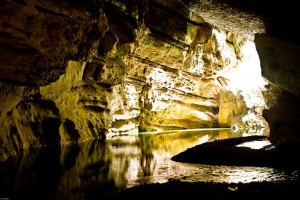 Biak-na-Bato National Park is a protected area located almost entirely within Barangay Biak-na-Bato in San Miguel, Bulacan. It was declared a national park in 1937 by President Manuel Luis Quezon by virtue of its association with the history and site of the Biak-na-Bato Republic. The park consists of a cave network and a system of rivers and trails of both historical and ecological importance. Situated only 80 kilometers northeast from Manila, it is fast becoming a popular weekend eco-adventure destination for the city dwellers.
Biak-na-Bato National Park is a protected area located almost entirely within Barangay Biak-na-Bato in San Miguel, Bulacan. It was declared a national park in 1937 by President Manuel Luis Quezon by virtue of its association with the history and site of the Biak-na-Bato Republic. The park consists of a cave network and a system of rivers and trails of both historical and ecological importance. Situated only 80 kilometers northeast from Manila, it is fast becoming a popular weekend eco-adventure destination for the city dwellers.
The caves at Biak-na-Bato are famous for their historic importance. It was the mountain hideout of the Filipino revolutionary forces during the Spanish regime, where the historic Republic of Biak-na-Bato was established, and where the Malolos Constitution was signed by Gen. Emilio Aguinaldo and Pedro Paterno. “Biak na Bato” or split of boulder is where Gen. Emilio Aguinaldo signed the Malolos Republic (first Constitution of the Philippines).
Today the area is mostly undeveloped however some improvements regarding infrastructure have recently been made. The park is ideal for exploration and exposure to its cave systems, forests, river systems, and mountains. Guides are available for various caves which always include some history. Picnic space, overnight stay and a cave guide service are provided by members of the Samahan ng Mamamayan Para sa Kalikasan ng Biak na Bato, a non-government organization. This guide service was founded by volunteers from Miriam College in Manila and is now run by residents.
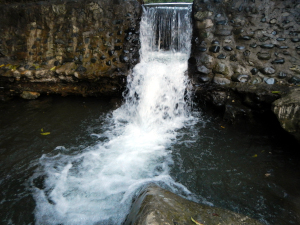 With hundreds of caves across the park, there is no shortage of exciting locations for even the most intrepid explorer. Interesting rock formations, stalagmites and stalactites are testaments that these caves had been here long before the revolution. They were the silent witnesses to the planning of the Philippine Revolution and had probably been home to the nomadic tribes that first settled in the country. It is possible to also see endemic species like cloud rats, wild pigs, bats and other endangered fauna. The 2,100-hectare national park offers various ecological attractions including hanging bridges and staircases connecting rivers and caves, winding streams, cascading waterfalls, and thick forests. The caves make for pleasurable exploration, including Bahay Paniki Cave, Aguinaldo Cave, Madium Cave, and Tanggapan which was the hideout of Aguinaldo and other revolutionary fighters during the Filipino-Spanish War.
With hundreds of caves across the park, there is no shortage of exciting locations for even the most intrepid explorer. Interesting rock formations, stalagmites and stalactites are testaments that these caves had been here long before the revolution. They were the silent witnesses to the planning of the Philippine Revolution and had probably been home to the nomadic tribes that first settled in the country. It is possible to also see endemic species like cloud rats, wild pigs, bats and other endangered fauna. The 2,100-hectare national park offers various ecological attractions including hanging bridges and staircases connecting rivers and caves, winding streams, cascading waterfalls, and thick forests. The caves make for pleasurable exploration, including Bahay Paniki Cave, Aguinaldo Cave, Madium Cave, and Tanggapan which was the hideout of Aguinaldo and other revolutionary fighters during the Filipino-Spanish War.
The park is an ideal location for families to explore nature and history together. In addition to the many pleasant hiking trails, waterfalls and hundreds of caves to explore, swimming and camping are also offered. Hiking trails can lead to small rivers, green forests and hanging bridges. Climbing the Susong Dalaga of San Miguel from Mount Mabio, or the highest point, Mt. Silid at 1009 meters above sea level is one of the best adventures that the park offers. Many come during the weekend because of the available picnic grounds and swimming areas. Mountain biking is also available in the park offering a leisurely way to explore the area. River trekking from Yungib to the park entrance and kayaking offer more exciting experiences.
Pinagrealan Cave (Norzagaray)
Located in Norzagaray, this cave is a subterranean network of caverns extending more than a kilometer deep. It is said to be filled with history and untold secrets. It was the site of secret meetings of the Filipino revolutionary forces during the war against Spain in 1896. The Katipunero Revolutionaries during the war against Spain used it as a camp in 1896 and again during the Filipino-American War in 1898 as hideout of General Emilio Aguinaldo (the First President of the Philippines). It was later used as a sanctuary by the Japanese Imperial Army when the Philippines was liberated by American Forces.
From the Pinagrealan Cave Facebook page (July 8, 2022): Starting Monday, July 11, 2022, caving will be by appointment. Our guides are on-call only, so unless you message or call us for a scheduled visit, we cannot guarantee that there will be guides for you when you drop by. Message us through our account and page, or text/call 09615230751.
Puning Cave (Dona Remedios Trinidad)
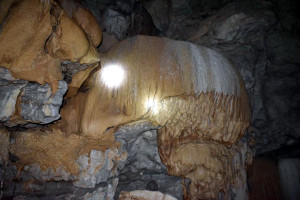 Located in Dona Remedios Trinidad, the cave’s physical features are mostly intact with few presence of dripstone and flowstone forms and stalactites. Flora like anabiong, hauili, kupang, narra, ipil bamboo and balete are seen outside, as well as birds (migratory & endemic), fish & shrimps. An estimated population of 4,000 fruit bats and insect bats are found inside the cave. Open only during dry season, it contains items of important geological, archeological, cultural, historical and biological value. The cave is open to experienced cavers or guided educational tour/visits. (Source: archived copy from visitmyphilippines.com). More information can be found on the Barangay Bayabas Website.
Located in Dona Remedios Trinidad, the cave’s physical features are mostly intact with few presence of dripstone and flowstone forms and stalactites. Flora like anabiong, hauili, kupang, narra, ipil bamboo and balete are seen outside, as well as birds (migratory & endemic), fish & shrimps. An estimated population of 4,000 fruit bats and insect bats are found inside the cave. Open only during dry season, it contains items of important geological, archeological, cultural, historical and biological value. The cave is open to experienced cavers or guided educational tour/visits. (Source: archived copy from visitmyphilippines.com). More information can be found on the Barangay Bayabas Website.
Vervidia Falls (Dona Remedios Trinidad)
Vervidia Falls is a rather secluded waterfall located in Dona Remedios Trinidad (often abbreviated DRT). The clear water from the upstream forests cascade in a 15-foot waterfall into a wide pool, ideal for swimming and bamboo rafting. The falls are accessible after about an hour and a half hike through the local terrain crossing a few rivers. As this is a family oriented destination, the assumption is that the hike should be easy for most, including children (not verified). Locals love coming here to escape the lowland heat and to commune with the rustic environment. A local company provides guides and information through their Facebook Page. Another nice blog on the location can be found on the BULACAN: Verdivia Falls page (shugarissweet.blogspot.com).
Festivals
There are more than 42,000 festivals held around the Philippines every year. Some that have been around for a long time have their roots in religion or other historical events. Others are simply town celebrations meant to bring the people together and showcase the local people and their crafts and traditions. Regardless of the origin or original purpose, locals go all-out to celebrate each of these festivals. Costumes, dances, parades and some of the most elaborate processions are a site worth witnessing.
Baliwag Lenten Procession (Baliwag)
Held every Holy Wednesday and Good Friday. the Prosisyon ng mga Santo is Baliuag’s main Lenten attraction. It is a grand parade comprising of 60 lavishly decorated floats depicting scenes of the Passion and Sufferings of Christ.
Buntal Hat Festival (Baliwag)
The Buntal Hat Festival is held annually in the town of Baliuag. It lasts for between one and three weeks ending on the May 26th, the town’s foundation anniversary. The local government of Baliwag created this festival to help preserve the tradition of the local buntal hat making industry. The festival includes more than a dozen funfairs, exhibitions, a beauty pageant dubbed Lakan & Lakambini ng Baliwag, music, street dancing competition, and more.
Calumpit Libad Festival (Calumpit)
A procession of well-decorated pagodas is held on the Calumpit river every 23rd of June right before the annual town fiesta in honor of St. John the Baptist. Numerous beautifully decorated pagodas from each barangay participate in this fluvial parade that is already a tradition to Bulaceños. The locals sing, dance and douse water to “baptize” passers-by. Be prepared to get wet, sing your heart out, dance to your delight and expect to have a lot of fun.
Fertility Dance Festival (Obando)
A fertility dance festival called the Obando Fertility Dance Festival is held every year from May 17 – 19 in Obando, Bulacan. It is attended by women, couples and singles hoping to find a spouse or have a baby. On the streets leading to the church, there are several groups of ladies, as well as those who simply want to be a part of the grand parade. Many ladies who are unable to bear say that dancing during the festival is a way to gain God’s favor. Some ladies dance more enthusiastically than others believing the more fervently they dance, the more likely they are to be blessed with a son or daughter.
Halamanan Festival (Guiguinto)
The Halamanan Festival is a held every year on January 23rd in the town of Guiguinto, the Garden Capital of the Philippines. It celebrates Mother Nature and the love of plants, trees and flowers. It honors the town’s patron saint, San Ildefonso with a miniature version of the Garden of Eden. The week-long celebration before the main event includes street dancers in their colorful costumes.
There are many fun activities and events during this festival including landscape exhibitions, gardening expos, seedling propagations, flower cuttings, flower arrangements, plant growing, interior and exterior decorations. It is a great festival for those who love to plant and for those who love to look at the beauty of Mother Nature. Many gardeners cultivate thousands of plants, flowers, and trees every year which they sell at a discount during the celebration. Many gardeners will teach you how to plant trees and how to take good care of them, giving you advice on how to water, fertilize and weed the plants.
Kneeling Carabao Festival (Pulilan)
Every 14th and 15th of May, the town of Pulilan celebrates the feast of San Isidro Labrador, the patron saint of farmers and agriculture in general. This festival is renowned for the tradition of kneeling carabaos together in a grandiose street parade, symbolizing thanksgiving for a year-long bountiful harvest. They bow or kneel in front of the cathedral, their heads festooned with garlands and their coats shaved clean for the event. Farm animals decorated in fancy garlands also join the parade.
Hundreds of people go out on the streets to watch beautiful floats decorated with all sorts of fruits, farm crops, produce, and multi-colored kiping (a traditional Filipino leaf-shaped wafer made from glutinous rice). Marching bands and graceful street dances lead the festive atmosphere. Fruits, sweets, food crops, and brightly colored kiping are strung on bamboo poles to symbolize the festival.
Pagoda Festival (Bocaue)
The Pagoda sa Wawa or Bocaue River Festival is held every first Sunday of July in Bocaue, in honor of the Holy Cross of Wawa. It commemorates the discovery of the miraculous cross floating on the Bocaue river 200 years ago. The main attraction of the celebration is the fluvial parade of the pagoda or decorated barge and colorful small boats.
During the Bocaue Pagoda Festival, a replica of the cross on which Jesus was crucified is paraded on a pagoda adorned with magnificent trimmings and guided by by colorful bancas. Hundreds attend the procession for a nine-day novena, during which they feast and celebrate the legendary rescue of the Holy Cross from the Bocaue River. Devotees customarily douse each other with water during the procession and those that cannot find space on the pagoda often swim alongside.
Sambuklod Festival (San Jose Del Monte)
Sambuklod is an acronym for Sambayanang Buhay at Umuunlad Kasama si Lorenzo Ruiz na Dakila (A Community that is Alive and Growing along with the Companionship of the Venerable Lorenzo Ruiz). Buklod, a Tagalog word meaning unite is what the festival hopes and wants to achieve – unity amidst diversity as a new parish and as a new and emerging community with residents coming from diverse cultural and ethnic backgrounds. Since its beginning in 2001, the festival has evolved and celebrated with a different theme each year.
The festival is held on the 4th Sunday of September every year at San Lorenzo Ruiz de Manila Parish in San Jose del Monte. It starts with a Novenario (9 days Novena to San Lorenzo Ruiz ). The following days are filled with variety shows, singing contests, Palarong Pinoy, fireworks display, processions and a Grand Healing Mass. The festival culminates on the 4th Sunday of September with a Mass and thereafter, a grand parade and street dancing competition.
The parade features a procession of floats made from recycled materials by the many parishes and groups who participate in the event. The street dancing competition, often known as Mardi Gras, is the major event. While at Sambuklod, individuals are encouraged to work together in harmony and joyful celebration, which is essential to the community’s overall advancement in terms of social and economic well-being as well as spiritual well-being.
Singkaban Festival: Linggo ng Bulacan (Malolos City)
The Singkaban Festival is the mother of all festivities in Bulacan – the feast of arts and culture in honor of Our Lady of Victory in Malolos. A week-long celebration showcasing Bulacan’s culture and arts, this festival is celebrated every September 8–15 together with the Linggo ng Bulakan. It is a province-wide, week-long celebration consisting of various colorful cultural presentations, art and culinary exhibits, arts and skills contests, and the prestigious annual Dangal ng Lipi Awards Night.
The symbol for the fiesta is the Singkaban, a decorated arch that every town or city erects as a sign of welcome during a fiesta. The Singkaban Unities activities showcase Bulacan’s traditional and modern arts and culture, such as a balagtasan or poetry recitation contest, singing of kundiman or traditional love songsm street dances, a parade of floats, a trade fair and a beauty pageant. On the last day of festivities, the town stages a reenacment of the Malolo Congress, where the first Philippine constitution was written.
Bazaar and galleries are open for tourists during the festival. Each municipality has its own both that features their town’s fabulous crafts and delicacies. Among the products are chicharon baboy of Sta Maria, ensaymada and pastillas of Malolos, agricultural crops of San Miguel, San Jose Del Monte and San Ildefonso, stunning plantito-plantita of Guiguinto, handy crafts of Baliuag like buntal hats, Sukang Sasa of Paombong and the mouth-watering goto of Plaridel.
Culture
Tagalog is the predominant language of the province with Kapampangan also spoken in areas close to the border of Pampanga. English is spoken and widely understood through the region.
The cuisine in Bulacan is as wide and varied as it’s colorful history. Many of the foods are influenced by Spanish and Chinese cuisine passed down through the generations. It seems that everyone has their own list of favorite local dishes (see the References section below for links to several of these). A few of our favorites (in alphabetic order) include Chicharon (crunchy, deep-fried pork belly or pork rinds), Pastilllas (candied carabao’s milk), Puto (rice cake that may be topped off with cheese slices or egg), and Bulacan Longganisa (sweet cured pork sausage).
The province is also famous for many of its native handicrafts. Several of these trace their roots back to Bulacan. Buntal weaving uses the fiber from the stalks of talipot palms to weave different types of products such as hats and bags. Pabalat is a form of intricate paper cutting, in this case from pastillas wrappers. Puni, the art of folding palm leaves has resulted in many colorful designs, such as birds, fishes, shrimps and toys. Singkaban is a form of decorated bamboo arch is traditionally used as welcome signage for a town, city or village.
Location
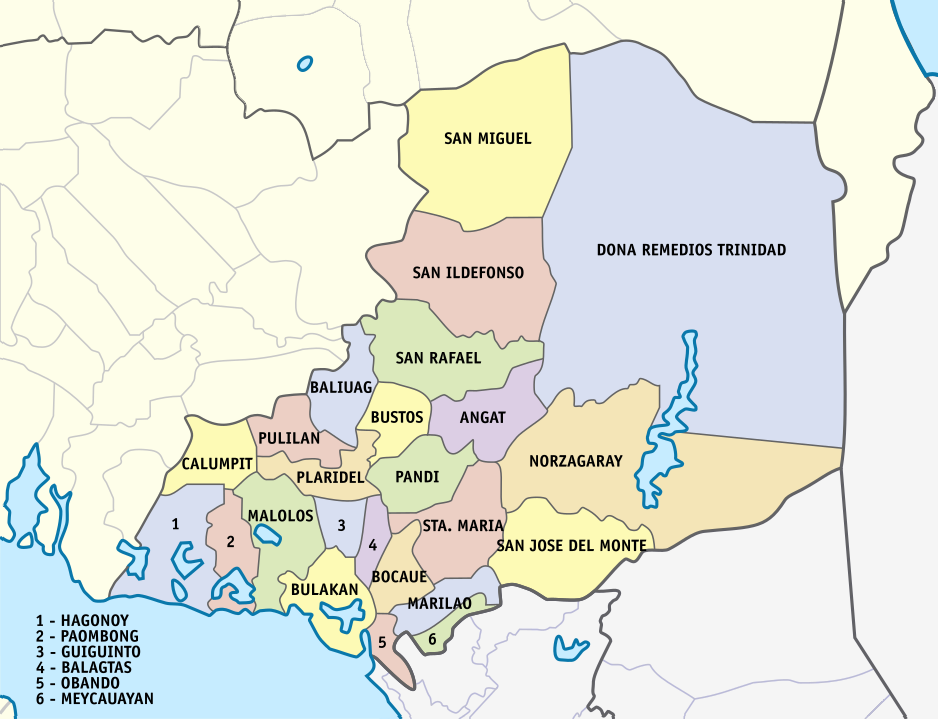 The province of Bulacan is located in the Central Luzon region of the Philippines (Region III) and is popularly known as the “Gateway to the Northern Philippines.” Just north of Metro Manila, it shares boundaries with Pampanga to the west, Nueva Ecija and Aurora in the north, Quezon and Rizal to the East, Metro Manila to the south, and Manila Bay on the south west.
The province of Bulacan is located in the Central Luzon region of the Philippines (Region III) and is popularly known as the “Gateway to the Northern Philippines.” Just north of Metro Manila, it shares boundaries with Pampanga to the west, Nueva Ecija and Aurora in the north, Quezon and Rizal to the East, Metro Manila to the south, and Manila Bay on the south west.
Bulacan is the home province of heroes like Francisco Baltazar (Balagtas), The Prince of Filipino Poets, Marcelo H. Del Pilar, The Great Propagandist, and Gregorio del Pilar, The Hero of Tirad Pass. In 1899, the historic Barasoain Church in Malolos was the birthplace of the first constitutional democracy in Asia. On November 7, 2018, the Provincial Government earned its fourth Seal of Good Local Governance award.
According to the 2020 census, Bulacan had a population of 3,708,890 people, the most populous in Central Luzon and the second most populous in the Philippines, after Cavite. The name of the province is derived from the Tagalog word ‘bulak’ meaning cotton, which was its former principal product. Bulacan is well endowed with natural wonders as well as many historical landmarks.
Bulacan’s rich history began with arrival of the Spanish. The boundaries of Bulican, Pampanga, and Nueva Ecija provinces were formed in 1848. The province played a prominent role in the armed struggle against Spain and the subsequent formation of the Philippine Revolutionary Government in 1898. Biak-na-Bato in San Miguel town was the scene of the signing of the agreement in 1897 that temporarily halted the revolution. Malolos City is considered the cradle of the Philippine Republic. The first Philippine Constitution was proclaimed here on January 23, 1899 and thus, it is also termed as Malolos Constitution.
Bulican started as small fishing settlements along the coast of Manila Bay and expanded into the interior with the arrival of the Spaniards. While agricultural still plays an important role in the economy of Bulacan, the assimilation into the growing sprawl of Metro Manila is both consuming some of the traditional farmland while at the same time promoting new industries. The province is a major supplier of Metro Manila’s food, especially rice, meat and vegetables. Bulacan is well-known for the following industries: marble and marbleized limestone, jewelry, pyrotechnics (fireworks), leather, aquaculture, meat and meat products, garments, furniture, high-value crops, tourism, sweets and native delicacies, and a wide variety of high-quality native products.
Getting There and Back
Bulacan is halfway between Ninoy Aquino International Airport (MNL) in Manila and Clark International Airport (CRK) in Angeles, Pampanga. The best way to get from Manila to Bulacan without a car is by train and bus which takes 1h 27m and costs ₱70 – ₱110, including transfers. (Jan 2023).
Popular Destinations
Cities
Other Bulacan Province Related
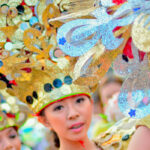 Bulacan Province Galleries Coming soon Popular Gallery Destinations City Galleries Other Bulacan Related References 32759019224.jpg – Batchi Luna – 2015 Baile de Calle (Salubong Festival: Streetdance Competition) …
Bulacan Province Galleries Coming soon Popular Gallery Destinations City Galleries Other Bulacan Related References 32759019224.jpg – Batchi Luna – 2015 Baile de Calle (Salubong Festival: Streetdance Competition) …References
- 32759019224.jpg – Batchi Luna – 2015 Baile de Calle (Salubong Festival: Streetdance Competition)
- 40 Yummy Bulacan Food Products: Our Ultimate Glossary – Bulakenyo.ph
- Amana Waterpark: A Must-Visit Pool Resort this Summer – Joyce Lamela, wheninmanila.com
- Amana Waterpartk – Pandi, Bulacan – Wondering Wanderer
- Art is not dead: A journey through Bulacan’s lost arts – The Raven Reporter
- Barasoain_Church_Malolos_City_05.jpg – Wikimedia Commons
- Biak-na-Bato_National_Park22jf.jpg – Wikimedia Commons
- Biak-na-Bato_National_Parkjf6203_09_JPG – Wikimedia Commons
- Biyahe ni Drew: Hidden Treasures of Bulacan – GMA Public Affairs
- Biyahe ni Drew: Revisiting Bulacan – GMA Public Affairs
- Biyahe ni Drew: The Hidden Gems of Bulacan – GMA Public Affairs
- Biyahe ni Drew: The Hidden Paradise of Bulacan – GMA Public Affairs
- Brief Historical Background of Bulacan – Philippine National Police
- Bulacan History – Scribd
- Bulacan History, Geography, Economy – PeoPlaid
- BULACAN: Food Trip and Pasalubong – Ben Goes Where
- Historical markers honor Malolos Cathedral – BusinessMirror
- History of Bulacan – Provincial Government of Bulacan
- Malolos Cathedral – Wikipedia
- ‘Pabalat;’ In Bulacan, pastillas wrappers are a labor of love – Rappler
- Pagoda Festival: The Ultimate Guide – Lysias Legarde, Hicaps Marketing Corporation
- Ph_fil_bulacan.png – Wikipedia Commons
- Pinagrealan Cave Spelunking in Norzagaray, Bulacan – Marcos Detourist, Ambot-ah!
- Puning_Cafe.jpg – Wikimedia Commons
- Sa Pinagrealan Cave – Norzagaray, Bulacan – San sa ‘pinas?!
- Singkaban Festival 2019 – The Kapampangan Traveller
- Top Bulacan Foods – theexodoers.com
- Weddings_at_the_Malolos_Cathedral_2017_04.jpg – Wikimedia Commons
About The Author
![]() Hi, I'm Tim and the main architect of this site. We're trying to get comprehensive content up as quickly as possible. Despite our best efforts some errors do get through. If you notice any mistakes or things that you think can be better explained please do let us know. If you're interested in contributing content (properly attributed of course) let me know - we're very interested in working with contributors. Send email to tim@islandsph.com or check out my profile here for more ways to communicate - https://islandsph.com/members/tim/profile/
Hi, I'm Tim and the main architect of this site. We're trying to get comprehensive content up as quickly as possible. Despite our best efforts some errors do get through. If you notice any mistakes or things that you think can be better explained please do let us know. If you're interested in contributing content (properly attributed of course) let me know - we're very interested in working with contributors. Send email to tim@islandsph.com or check out my profile here for more ways to communicate - https://islandsph.com/members/tim/profile/

